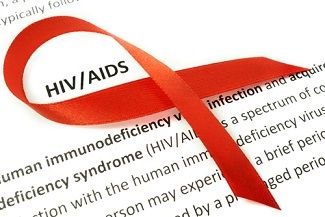HIV Stigma Affects Testing Rates Differently Among Men, Women
HIV stigma had different effects on the rate of HIV testing among men and women in rural Uganda, a new study found.

Reducing HIV stigma is a goal of health care professionals working to increase HIV testing and treatment, but a new study in rural Uganda suggests those efforts should be tailored by gender and location.
The study, published in The Lancet HIV, included 9,740 HIV-negative participants (4,359 men and 5,381 women) interviewed between Nov. 25, 2015, and May 26, 2017.
“For women, living in areas where there are high levels of HIV stigma can serve as a social-environmental barrier to HIV testing,” corresponding author Susan M. Kiene, PhD, MPH, professor of global health and associate director for Research, School of Public Health, San Diego State University, told Contagion®. “While there is a clear need for efforts to reduce stigma to increase HIV testing, those efforts need to be tailored by gender and the local context.”
The study found that greater "perceived stigma" at the individual and community level was related to lower testing rates for women. For men, greater individual-level stigma was related to lower testing rates, but greater community-level stigma was related to more frequent HIV testing.
“The findings that the effects of perceived stigma at the community level on frequency of HIV testing for women being stronger than effects of individual-level perceived stigma was quite surprising,” Kiene said. “The findings among men were also quite surprising in that men were not affected by community-level stigma.”
Among the participants, 2,071 (21%) had not been tested in the previous 2 years, including 940 (9%) who had never been tested. Men were less likely to have been tested, with 72% receiving HIV tests in the past 2 years compared with 84% of women.
Investigators used used Poisson regression models, reporting B coefficients to determine associations between lower stigma predicting higher levels of HIV testing at the individual-level (B=—0.173, p<0·001) and community-level (B=–0.223, p<0·001) for women and at the individual level for men (B=–0.030, p=0.018). For men, the opposite was true at the community level, with higher perceived stigma associated with higher testing frequency (B=0.077, p=0.008).
“The strong effects for community-level perceived stigma among women in this setting suggest that clinicians and health care providers need to address HIV stigma at the community-level using contextually tailored approaches and select HIV testing approaches that avoid placing women in situations where they may perceive that they could experience prejudice and discrimination (enacted stigma) related to HIV testing from others in their community,” Kiene said. “HIV self-testing or similar approaches may be especially appropriate in these situations.”
These ideas could be useful beyond HIV testing.
“Given that we are in the middle of the COVID-19 pandemic we might also want to think about how the lessons we've learned from HIV, including about stigma and HIV testing, may apply to COVID-19 testing and our overall pandemic response efforts,” Kiene said.
Similarities of stigma and education around HIV and COVID-19 were discussed during the International AIDS Society (IAS) AIDS 2020 Virtual Sessions in July.
The study was conducted by investigators at the University of Connecticut Institute for Collaboration on Health, Intervention and Policy; Makerere University School of Public Health Department of Disease Control and Environmental Health, Kampala, Uganda; FHI 360, Durham, North Carolina; Department of Global Health and Population, Harvard T H Chan School of Public Health, Boston; Gombe Hospital and San Diego State University with funding from the US National Institute of Mental Health.
More work is needed to better understand the effects of stigma on HIV testing.
“As we note in the paper, we didn't investigate intersectional stigma so that is one direction for next steps,” Kiene said. “Also looking at stigma longitudinally in this setting - which we are working on, specifically how stigma may have been affected by the rollout of universal test and treat (provision of HIV treatment to everyone with HIV upon diagnosis regardless of CD4 count). If there is less fear about the potential consequences of HIV testing (the possibility of getting a positive result) because treatment is universally available to everyone, in theory, over time that should help to reduce stigma because more and more people will be able to live long healthy lives with HIV.”
